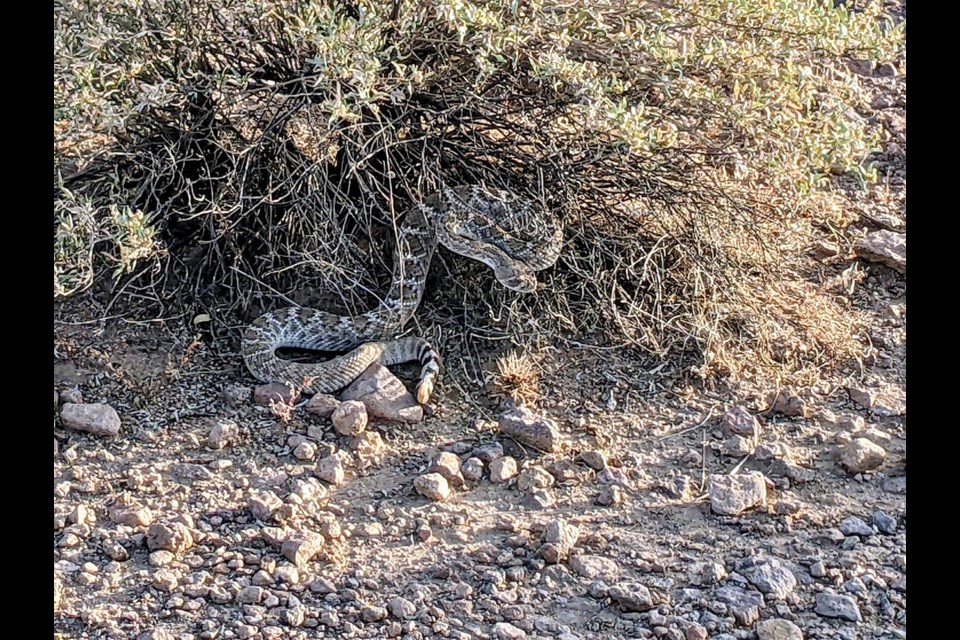The Queen Creek Public Works Department recently found a rattlesnake in the Queen Creek Wash and this reporter recently came across one ready to strike on a trail in San Tan Mountain Regional Park in Queen Creek on May 14.
It makes me want to pick up the newest book about these creatures that roam the desert with us. Mesa Community College Life Science professor Dr. Andrew Holycross has co-authored the second edition of "A Field Guide to Amphibians and Reptiles in Arizona" with two other longtime researchers, Thomas Brennan and Randall Babb. The book is published by the Arizona Game and Fish Department.
Originally released in 2006, this second edition incorporates: 1) new accounts for recently introduced non-native species, 2) numerous updates to scientific names, 3) new images (photographs, graphics and art), and 4) updated species distribution maps. The species accounts have also all been updated to reflect the latest understanding of the natural and life history of these fascinating animals. Early online reviews are filled with praise for the second edition. Dr. David Hillis, a professor at the University of Texas at Austin, said “this field guide sets a new standard for what field guides should be.” Emily Taylor, a professor at California Polytechnic State University states that the “second edition is a must-have for residents and visitors.”
"A Field Guide to Amphibians and Reptiles in Arizona" is a tool for wildlife enthusiasts and others who wish to identify and learn about the reptiles and amphibians of Arizona. With its varied terrain, Arizona is one of the most biologically diverse areas in the United States. The guide features full-color photography, illustrations, natural history and detailed accounts that enable the reader to identify all 155 species of salamanders, frogs, toads, turtles, lizards and snakes known to be reproducing in Arizona.
Holycross’ students are contributors to the new edition.
“One of my MCC students, who is now applying for doctoral programs, was a partner in the creation of the ARCGis maps that informed many of the maps in this book, and other students assisted with gartersnake surveys that added much to what we know about the species in Arizona,” Holycross said.



